
November 2016
Engine Wonderland
By Paul Harvey
Two years ago the museum recognized the need for another structure to house the many oil field engines that were either scattered outside or were in a storage building. These engines begged to be displayed and operated for all to enjoy. Most could run with a little tinkering. A pavilion structure seemed most logical, but the location was perplexing. Many sites were measured and evaluated, but none were just right. Finally we agreed on a site - unused and filled with brush - between Pat's Place and Exley Station. Estimating the number of engines to be included, we were able to plan a 104 foot by 32 foot pavilion in that area. It would be 20 feet from our east property line, and fortunately the location was acceptable with that land owner. We now had a plan - as well as a huge project ahead. It was an exciting start!
Our member Stewart McKinley, who is a professional contractor, was contacted about the
project and we accepted his bid.
On
Clearing the trees and
brush posed no problem for Steve Wolbert's little
The building then needed all utilities installed, which meant underground pipes and wires. The electric service was brought from the Exley Station and a service electrical box was installed. The building now has 39 LED light bulbs using less than 400 watts total. Receptacles were conveniently placed on the posts. The natural gas, water, and compressed air came from Pat's Place. Photo 5 shows a view of the water lines before they were buried. One is incoming water, and the other is the drain. There is a natural gas line for engine fuel around the building perimeter, about eight inches above the floor. The compressed air line runs overhead to provide starting air to the bigger engines. It is a wonderful and complex system that is interconnected to all the other buildings on the hill.
We now jump ahead to mid-October 2016 to see a fantastic red and tan structure. Note Photo 6. Whoops! It's not a pavilion anymore, but has grown into a building. Both end walls, as well as the east wall, are now enclosed. Note the five big windows. This design presents a very pleasant appearance from the street. The red tank is a natural gas accumulator and the green one is the compressed air. The building's destiny has now changed with this great improvement.
Perhaps a minor problem, but a name had to be chosen. We considered so many but finally settled upon "Paul's Pavilion" because I have been a major contributor to the project. I just had to add "Engine Wonderland" to the title, as it has certainly been that for me. A quick dictionary check revealed that "pavilion" could either be an open or enclosed display hall. See the sign in Photo 7.
Photo 8
depicts the interior view from the north doorway.
"Engine Wonderland" now houses 27 engines, with several already in operation.
There is room for about six more engines and they will be added
soon. The spacious interior aisle
will provide winter storage for some antique mobile equipment. On
close inspection, the 1958 Case
310 dozer and the tiny Hough Payloader are already there.
Hanging in the center of the structure is the original sign for
the United Natural Gas Company's laurel display near
A view of the engines along the east wall is truly impressive. Note Photo 9. In the foreground is Steve Tachoir's magnificent 30 hp Olin, the first engine installed. After so many years, it now runs superbly. Across the aisle is the west wall display seen in Photo 10. All the engines are oil field related and soon will be documented with display plaques.
Some engines have been grouped together as to manufacturer or similarity. Steve Tachoir has already added a 15 hp Olin and soon will bring a 10 hp Olin. Photo 11 shows three big - and amazingly similar - two-cycle engines: a 20 hp JC, a 20 hp South Penn, and a 15 hp Ball. There is a definite connection with the makers of the three, and that relationship will be explored in a future article. Our Pattin Brothers engine display is seen in Photo 12. It starts with a 40 hp four-cycle throttling engine with opposed compressor cylinders, then progresses to a 25 hp four-cycle hit and miss engine, followed by a 15 hp hit and miss engine. In the foreground are two 8 hp four-cycle engines, one a straight engine and the other with the combination pumping power built into one unit. Soon, a 12 hp two-cycle Pattin Brothers, with attached and back-geared pump, will be added behind the little 8 hp machines. This grouping will be six Pattin Brothers engines in one location!
The National Transit
engine display, seen in
Photo 13,
features the 1932 "Little
Booster" engine near the window.
This machine was designed with two, "two-cycle" power cylinders and two
opposed compressor cylinders.
They were designed to run continuously, boosting gas pressure on remote
lines. Considering the location where it
was found, it could well be the
prototype model. The little red
vertical in the left foreground is the typical 4 hp "NT" manufactured in
the 1915 era. At one time
literally hundreds of these were scattered about the oil fields, pumping
single, shallow wells. The center
engine is a much older, two-cycle National Transit, which features an
open crankcase and cross head.
Built about 1900, it was found near
Photo 14
provides an interesting
The unfinished west
side is seen in
Photo 15. It is still
unfinished because next year an18 foot wide addition will be constructed!
Finally, the entire structure will be enclosed with red and tan
siding, completing the building.
Exciting plans are being made to choose the engines to be included,
and it appears that the addition
will fill easily. The south
corner will include the 160 hp twin cylinder Western engine built in
Please visit the museum during 2017 and tour Wonderland. I'm sure you will not be disappointed.

Photo 1: Drawing of the new building
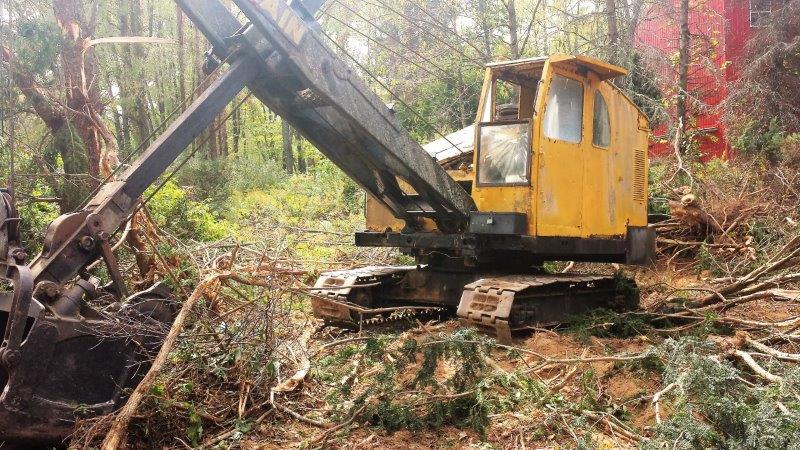
Photo 2: Lorain shovel clearing brush

Photo 3:
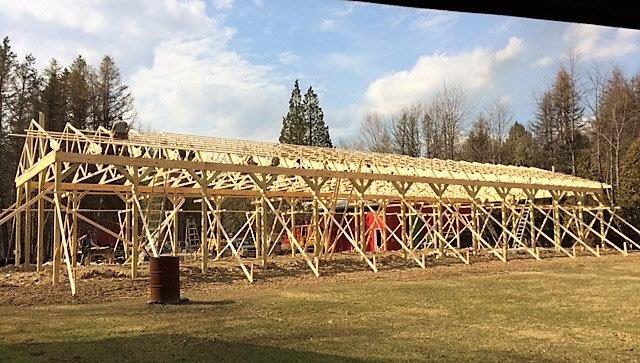
Photo 4: Construction as of March 9, 2016
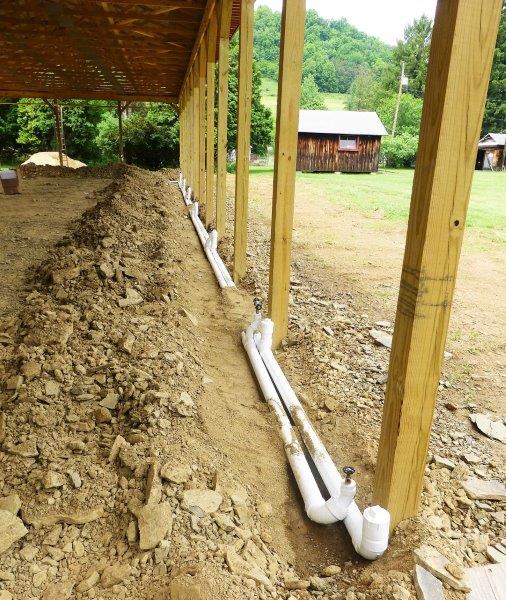
Photo 5: Water lines installed

Photo 6: The pavilion in October 2016

Photo 7: An appropriate name

Photo 8: Interior view

Photo 9: East wall engines

Photo 10: West wall engines

Photo 11: A 20 hp JC, a 20 hp South Penn, and a 15 hp Ball
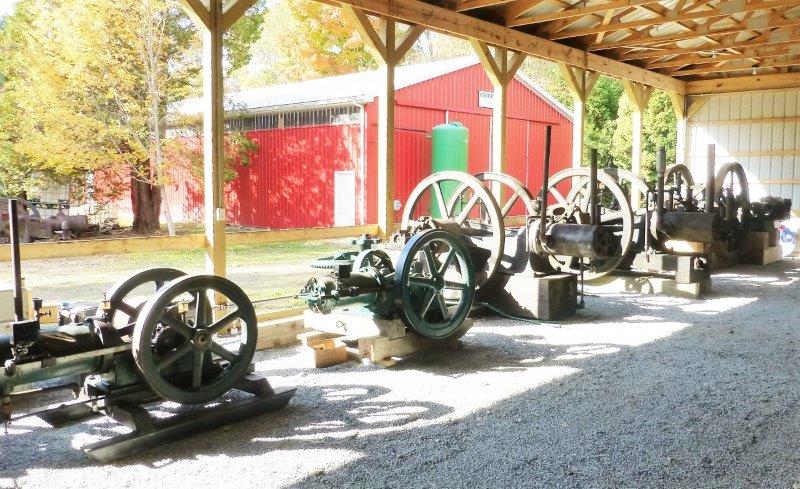
Photo 12: Pattin Brothers engines
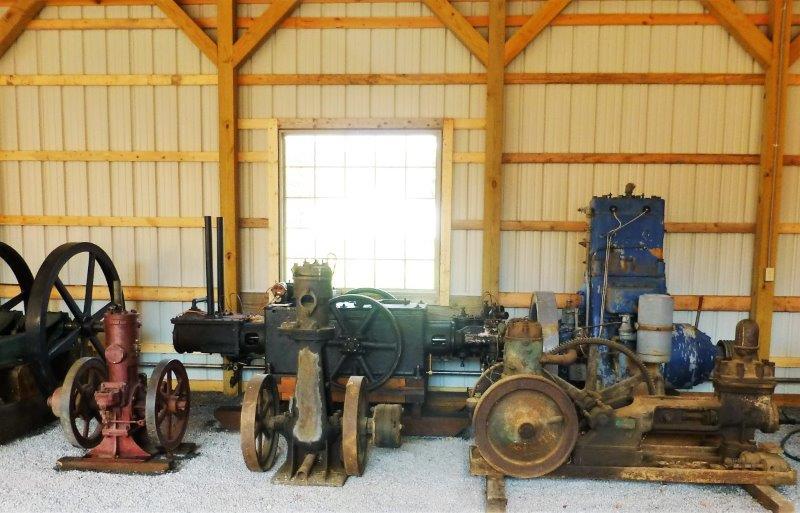
Photo 13: National Transit engine display

Photo 14: Bessemer engines

Photo 15: West side awaiting an addition